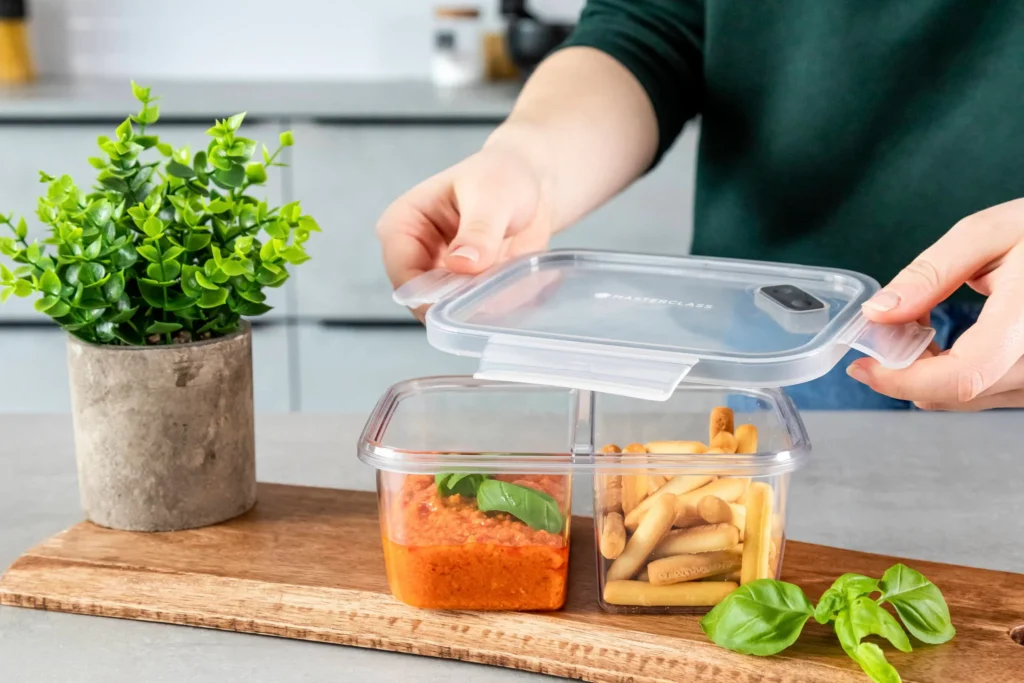
Meal Prep Containers is an efficient way to save time, eat healthier, and manage portion control throughout the week. One essential aspect of successful meal prepping is selecting the right container size. In this guide, we’ll dive into the debate between 3-cup and 4-cup containers, exploring how each one works for different meals and lifestyles. Whether you’re preparing meals for breakfast, lunch, or dinner, knowing the right container size can improve your meal prep experience.
Let’s explore what sets 3-cup and 4-cup containers apart, and how to choose the right one for your meal prep needs.
Understanding the Importance of Meal Prep Containers
Meal prep containers are vital tools in helping you organize and store food effectively. A good container keeps food fresh, Meal Prep Containers makes it easy to portion, and even helps in managing your diet. But beyond just storing food, the size of the container plays a critical role.
For meal preppers who aim for efficiency, balancing container size is key. Too small, and you risk inadequate portions or cramming food. Too large, and you may be tempted to eat more than necessary or waste space in your fridge.
The Difference Between 3 Cup Size and 4 Cup Size Containers
1. 3 Cup Size Containers: Best for Controlled Portions
A 3-cup size container is often ideal for those focusing on portion control. It is a compact option, commonly used for single meals such as lunch or light dinners.
- Great for: Snacks, salads, lean proteins, grain-based meals.
- Example Meals: A 3-cup container could easily fit a chicken and vegetable stir-fry or a medium-sized salad.
One major benefit of 3-cup containers is that they encourage proper portioning. If you’re aiming for calorie control, these containers ensure you stick to recommended portions without overfilling.
- Pros:
- Compact and easy to carry.
- Perfect for lighter meals.
- Limits overeating with controlled portions.
- Cons:
- May be too small for larger meals.
- Could require multiple containers for bigger eaters.
2. 4 Cup Size Containers: More Flexibility
If you’re looking for a bit more space in your meal prep, a 4-cup container offers added flexibility. It’s better suited for heartier meals or people with larger appetites.
- Great for: Larger portions, full meals, meal diversity.
- Example Meals: Think of a 4-cup container holding a portion of spaghetti with meatballs or a heartier stew.
The extra space in a 4-cup container also allows room for more food diversity, making it suitable for meal combinations such as grains, proteins, and veggies in one dish.
- Pros:
- Suitable for more substantial meals.
- Ideal for people who meal prep less frequently (you can store larger quantities).
- Versatile for meal diversity.
- Cons:
- Can be bulky for snacks or lighter meals.
- May encourage overeating if portion control isn’t a priority.
Deciding Which Size is Right for You
Choosing between 3-cup and 4-cup containers largely depends on your meal prep habits, nutritional goals, and appetite. Here are some factors to consider:
- Portion Control: If you’re trying to reduce caloric intake or follow a specific diet plan, the 3-cup container will help you stick to smaller portions.
- Meal Type: Think about the types of meals you typically prepare. A single-protein meal with veggies may fit perfectly in a 3-cup container, while a meal with grains, veggies, and protein may need the space of a 4-cup container.
- Storage Space: Larger containers take up more room in the fridge or freezer. If space is limited, you might opt for more compact, stackable 3-cup containers.
- Meal Frequency: If you only meal prep once or twice a week, a larger container might be more convenient, as you can store bigger quantities. For daily meal preppers, 3-cup containers are often sufficient.
Other Factors to Consider When Choosing Meal Prep Containers
- Material: Plastic, glass, or stainless steel? Each material has its benefits:
- Glass: Great for heating and doesn’t retain odors.
- Plastic: Lightweight and portable, but may not last as long.
- Stainless Steel: Durable and eco-friendly, though it may not be microwave-safe.
- Lids & Leakproofing: Make sure the lids seal tightly to prevent spills, especially if you’re packing liquid meals like soups or stews.
- Microwave & Dishwasher Safe: Look for containers that are microwave-safe for easy reheating and dishwasher-safe for simple cleaning.
- Stackability: If you’re prepping meals for an entire week, stackable containers are essential to maximize space in your fridge or freezer.
Internal Links
For more meal prep ideas and recipes, check out our Meal Prep Recipes section on Recipesify. You’ll find a variety of recipes designed for 3-cup and 4-cup containers, making it easier to portion your meals effectively.
Additionally, explore our Healthy Chicken Recipes to pair with your meal prep containers.
Conclusion
In the world of meal prepping, container size matters. Whether you opt for a 3-cup container to keep portions in check or a 4-cup container for heartier meals, choosing the right size can elevate your meal prep game. Evaluate your portion needs, storage space, and meal preferences to make an informed decision. With the right containers, you’ll make meal prepping easier, healthier, and more efficient.

